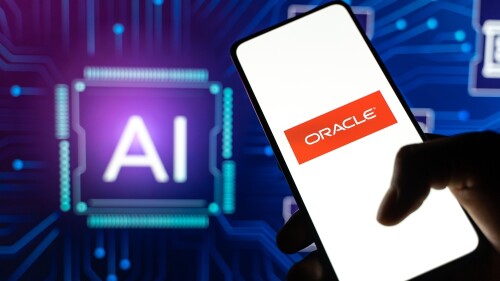New and Disruptive Technology
Oracle’s stock recently surged 36 percent in a single day after the announcement of a new deal with OpenAI—a spike that generated an extra $244 billion in market cap for the company. The move fueled increased speculation about a potential AI bubble brewing. Such high-flying stock prices recall the dot-com bubble, when the NASDAQ stock index lost more than 70 percent of its value, dropping from a high of 5,048 in March 2000 to a low of 1,139 in October 2002.
At the 2025 ULI Asia Pacific Summit, a distinguished panel of industry leaders convened to dissect what the rise of artificial intelligence means for the sector and how organizations can harness its potential. Their debate spanned the frenetic growth of data centers, the journey of AI adoption, and seismic shifts afoot for the built environment and the workforce.
At the ULI Spring Meeting 2025 session “Mastering Innovation: Tech-Driven Transformation of Planned Communities,” two prominent community developers—Laura Cole, senior vice president at Lakewood Ranch, and Fred Balda, president of Hillwood Communities—discussed how digital tools and data are reshaping large-scale developments. Moderated by Cecilian Partners’ Philip Worland, the conversation highlighted the role of technology in revolutionizing both front-end and back-end operations in the master-planned community (MPC) sector.
As drones and electric flying vehicles mature, China imagines a new urban landscape
In Jersey City, N.J., commuters recently started using what is believed to be the first moving sidewalk designed as a permanent facility for the large-scale movement of pedestrian traffic.
October 1970: In a story titled “Computerized Cash Flow Analysis: A New Way to Evaluate Cash Project Feasibility,” the authors, John Hysom and Charles Juengling write, “In land development, cash flow has always been an important factor. In 1970, however, with both long-term and short-term financing at record interest levels, it has now become imperative that buildings and developers have as accurate a projection of cash flows, expenses, and income as possible.”
The opportunities presented by artificial intelligence (AI) today seem unlimited. During the early innings of this exciting new technology, the phrases generative AI and machine learning are often being used interchangeably. In the multifamily industry, practical applications of AI are primarily based on machine learning, a subset of AI that uses algorithms to learn automatically from big data to identify patterns and make intelligent predictions.
The current hype around artificial intelligence (AI) has many in the real estate industry dreaming about harnessing it to assist with investment decisions. But there’s a giant stumbling block: too much bad data.
The implications of climate change are becoming hard to ignore. The frequency of natural disasters has increased significantly in recent years, with the United States experiencing an average cost of $18 billion–plus from climate disasters per year. As these kinds of events have grown more common, calculating climate risk has become a hugely important task for commercial property owners. The topic was the main theme during a panel discussion at the April 2024 Resilience Summit in New York City.
ULI Greenprint has announced that its membership has grown to include more than 70 private companies, demonstrating the real estate industry’s momentum toward and commitment to decarbonization. Through measurement, benchmarking, knowledge sharing, and implementation of best practices, ULI Greenprint members strive to reduce greenhouse gas emissions by 50 percent by 2030 and achieve net zero carbon emissions by 2050 for buildings under operational control.









